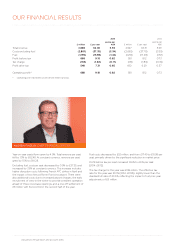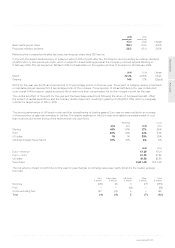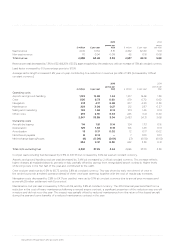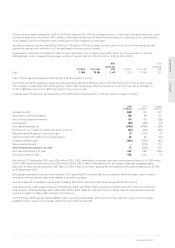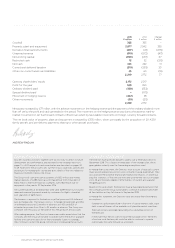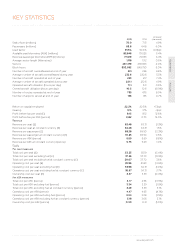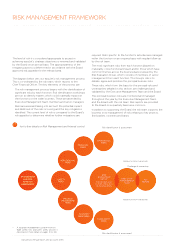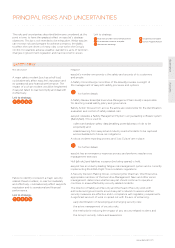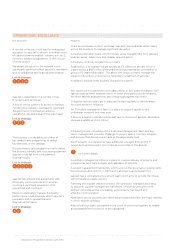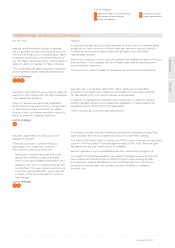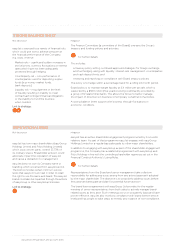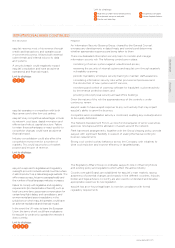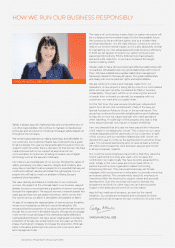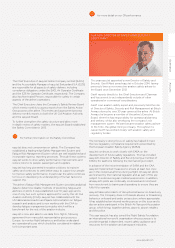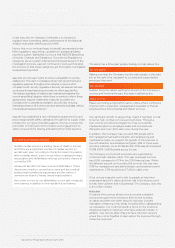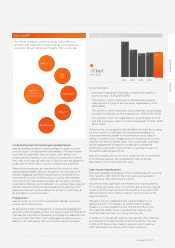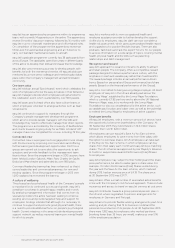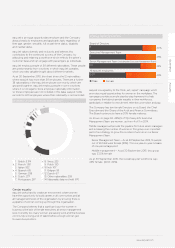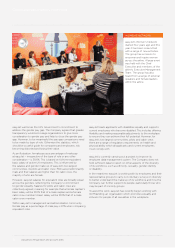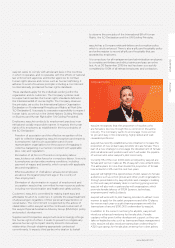EasyJet 2015 Annual Report Download - page 31
Download and view the complete annual report
Please find page 31 of the 2015 EasyJet annual report below. You can navigate through the pages in the report by either clicking on the pages listed below, or by using the keyword search tool below to find specific information within the annual report.
Strategic report Governance Accounts
27
www.easyJet.com
TIONAL EXCELLENCE CONTINUED
Risk description Mitigation
Industrial action
easyJet, and the aviation industry in general,
has a significant number of employees who are
members of trade unions. Industrial action taken
by easyJet employees, or by the employees of
key third-party service providers, could impact on
easyJet's ability to maintain its flight schedules.
This could adversely affect easyJet's reputation
and its operational and financial performance.
Link to strategy:
2 3 5
As easyJet operates across Europe there are 18 unions and nine representative
bodies across eight countries of which crew are members. easyJet seeks to
maintain positive working relationships with all trade unions and other
representative bodies.
Each of the countries in which easyJet operates has localised employment terms
and conditions. This mitigates the risk of large-scale internal industrial action
occurring at the same time.
Processes are in place to adapt to disruptions as a result of industrial action.
Senior management succession
easyJet's current and future success is reliant on
having the right people with the right capabilities
in key leadership positions.
Failure to develop and grow the capabilities
and behaviours required of senior management
so that there are clear successors for all key
business roles, could adversely affect easyJet's
ability to deliver its strategic objectives.
Link to strategy:
5
easyJet's aim is to develop talent from within. There are several talent
development programmes in place for individuals who have been identified
for fast-tracking into more senior roles as vacancies arise.
In addition, a management development programme is in place to develop
people management and senior leadership capabilities. These programmes
operate at various levels within the organisation.
There is an annual succession planning process.
Single fleet risk
easyJet is dependent on Airbus as its sole
supplier for aircraft.
There are significant cost and efficiency
advantages of a single fleet, however,
there are two main associated risks:
• technical or mechanical issues that could
ground the full fleet, or part of the fleet,
which could cause negative perception; and
• valuation risks which crystallise when aircraft
exit the fleet. The main exposure at this time
is with the ageing A319 fleet, where easyJet
is reliant on the future demand for second-
hand aircraft.
Link to strategy:
3 4
The Board considers that the efficiencies achieved by operating a single fleet
type outweigh the risks associated with easyJet's single fleet strategy.
The Airbus A320 family (which includes the A319) is one of the two primary fleets
used for short-haul travel. There are approximately 6,000 A320 family aircraft
operating with a proven track record for reliability.
easyJet operates a rigorous established aircraft maintenance programme.
To mitigate the potential valuation risks, easyJet regularly reviews the second-
hand market and has a number of different options when looking at fleet
exit strategies. Leasing facilitates the exit of A319 aircraft from the fleet by
transferring residual value risk, and also provides flexibility in managing
the fleet size.
1
2
3
5
4
Link to strategy:
Build strong number 1 and 2 network positions
Drive demand, conversion and yields
Maintain cost advantage
Culture, People & Platform
Disciplined use of capital



